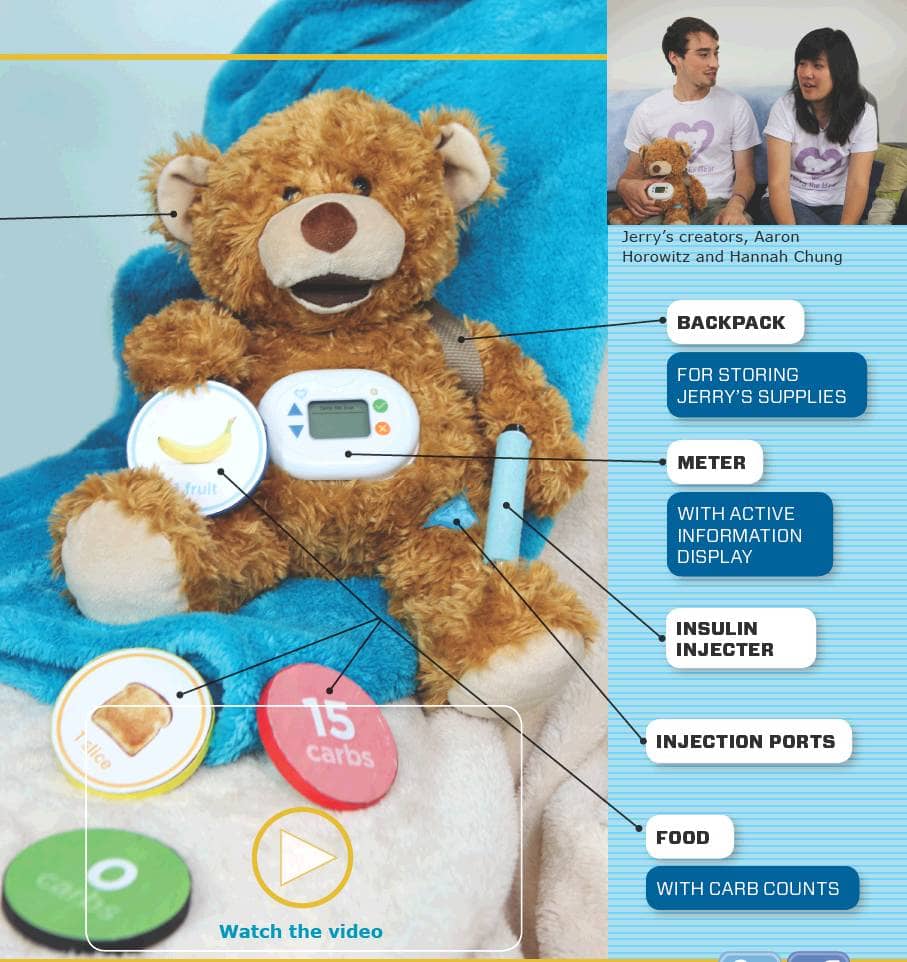The Bear Facts

Children have played with toy bears – from Teddy to Winnie to Yogi – for more than a century. Now youngsters with diabetes have a creature all their own. Meet Jerry the Bear.
Two young entrepreneurs, Aaron Horowitz and Hannah Chung, have combined the power of play with the comfort of a teddy bear to give children with Type 1 diabetes a snuggly friend. Jerry is an interactive companion (watch the video) that uses sound and touch-screen technology to show kids, ages three to seven, the impact on their diabetes of everything from injections to food choices.
By taking care of the bear, children learn the “why” behind diabetes management, helping them to understand why their parents must monitor their blood glucose and give them injections. The bear’s nutritional game feature, which allows them to “feed” the bear everything from (toy) celery to sweets, is bound to help children understand some basics about carb counting. Jerry also allows children to teach others about diabetes by using the bear to show and tell what they have learned. Jerry can even help a non-diabetic child in a family where a parent or sibling has diabetes to gain a better understanding of what the condition entails.
Horowitz and Chung met as undergraduates at Northwestern University, and now house their start-up business, called Sproutel, (www.sproutel.com) in Providence, RI. Jerry is their first creation, one they introduced to diabetes educators while wearing bear costumes at the most recent national diabetes educators conference. On the horizon are similar teaching tools targeting asthma and obesity.
For now, their challenges are delivering the beta version of Jerry, which is being assembled in China (they’re taking orders); refining the product based on customer feedback; and figuring out how to expose potential distributors to the lovable creature. “We would like to see every child receive a Jerry the Bear at first diagnosis,” Horowitz said. “It is an educational tool that makes a complete circle of empathy.”
Thanks for reading this Insulin Nation article. Want more Type 1 news? Subscribe here.
Have Type 2 diabetes or know someone who does? Try Type 2 Nation, our sister publication.